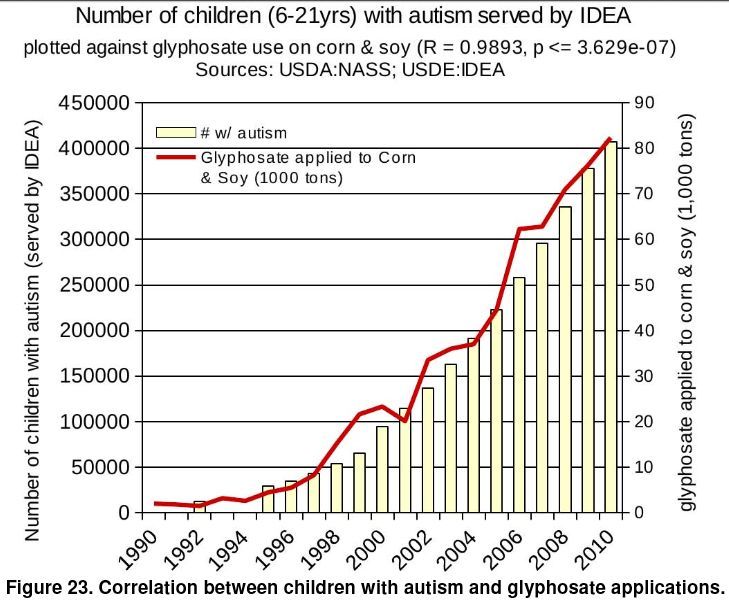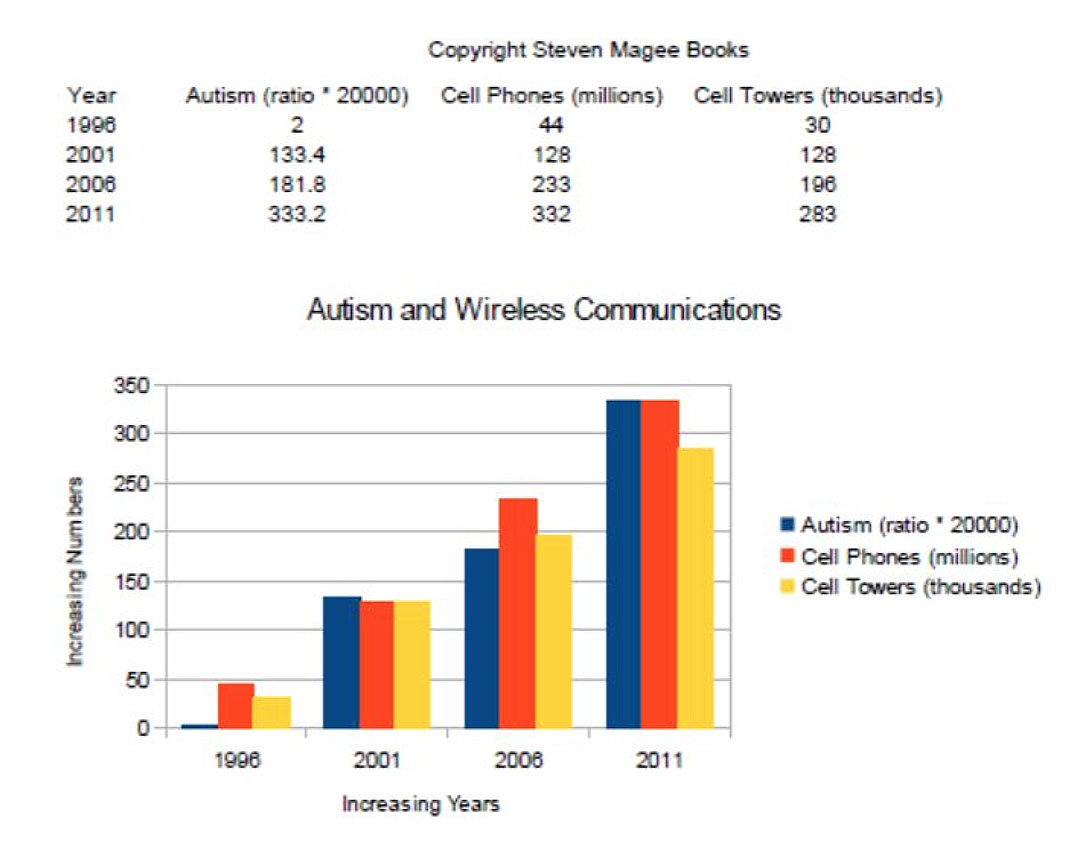on the other hand autism is behaving as a kind of outbreak for twenty years, so focusing on autism causes may provide answers to CFS/ME triggering agents (as far as they may be related)


And vaccines . They really do love us sooo much .
on the other hand autism is behaving as a kind of outbreak for twenty years, so focusing on autism causes may provide answers to CFS/ME triggering agents (as far as they may be related)


Well if you had a block containing say 5,000 people, since the general prevalence of ME/CFS is normally quoted at 0.2%, then you might expect 0.2% x 5,000 = 10 people to have ME/CFS in that block.
If you had more than that, say 20 people with ME/CFS in this block, and you want to calculate the odds of that happening just by chance, I think you would need to use the formulas from a branch of mathematics called "permutations and combinations" to find your answer. I don't think it would be a difficult calculation, but I find anything mathematical hard going with brain fog.
Also at the eMErge meeting, I talked to Cathie Powell, MPH, CEO of an Adelaide group called Bridges and Pathways, which aims to help patients and caregivers dealing with ME. She says they still see outbreaks of ME/CFS in Adelaide, but they are smaller. She sees clusters from individual high schools - perhaps 5-12 new ME/CFS patients at a time. This came up because, in making my point about epidemics and common mutations, I used the example of the famous 1949 Adelaide epidemic of ME/CFS, which was, at the time, called atypical polio and might today be called post-poliovirus fatigue.
As far as outbreaks that involve the same pathogen going around and disabling a group of people, I don’t think we have that incredibly common anymore. As far as geographical clusters?? I noted w interest that Ron said he found out there were a few severe ME patients on his same block, when they started doing the study. Perhaps that’s explainable by chance, I’m not great w math. But I found it interesting.
I find math hard w severe brain fog too, but there are estimates that might be possible.Well if you had a block containing say 5,000 people, since the general prevalence of ME/CFS is normally quoted at 0.2%, then you might expect 0.2% x 5,000 = 10 people to have ME/CFS in that block.
If you had more than that, say 20 people with ME/CFS in this block, and you want to calculate the odds of that happening just by chance, I think you would need to use the formulas from a branch of mathematics called "permutations and combinations" to find your answer. I don't think it would be a difficult calculation, but I find anything mathematical hard going with brain
fog.
I do think there’s a clue there. But I think it’s not extremely simple. Norway and the uk share being damp and dark climes, but if there’s an idea that the biome of an area becomes problematic when molds interact with industrial pollution (see my recent thread on nanoparticles) and not simply “ordinary” forest molds in the wild, then dampness *alone* wouldn’t make the air problematic -eg im sure the amazon rainforest is amazing, but we might expect dampness and darkness plus dense civilization to make the air problematic. It seems like one of the reasons the American west seems to be so much better for many isn’t just dryness but there being untouched wilderness and greater distances between people and buildings and citiesThe only way to really be confident about geographical clusters is with really big sample sizes. That said, I like the mapping idea and I've spent quite a bit of time on Google trends looking at where me/cfs is most searched for (UK/Norway, two culturally very different places that are very geographically close, I can't help thinking there's a clue there).
I did some calculations based on the approximate amounts of houses per block in suburban Palo Alto residential neighborhoods, accounting for around 3 people per household, 6-8 houses per block. But then i assumed that Ron may have meant not literally his block but adjacent blocks , and so i made conservative estimates and a range.We do know how frequently it occurs in the general population, as a result of various studies which have estimated the prevalence. 0.2% is the normally quoted prevalence.
In 1950s UK unmarried nurses ( especially if still training) stayed in nurses accommodation , usually at/ near hospital, which may have similar environmenral triggers/ acted as a secondary incubator.I didn't explain myself very well – what I meant was the pressure to keep on working, even though they were ill themselves with an ME-associated pathogen. Many current patients feel that not stopping to rest soon enough, and for long enough, was a factor in their own (endemic) cases; if acute lack of rest was teamed with a particularly risky infectious trigger, it may go some way to explaining the outbreaks.
I've only read up the Royal Free outbreak in any detail, but a high proportion of those who became sick were female nurses and auxiliaries. Many of them would have had caring responsibilities in addition to their jobs, putting even greater pressure on them to keep working despite being ill. The women presumably took the infectious trigger home to husbands, children and friends; but if they were not under the same physical and psychological stress from nursing people with a potentially deadly disease, it might explain why they didn't also develop ME.
However – to undermine my own case – it's reported that at least some of those 1955 epidemic patients developed brain or spinal lesions that are not unusually seen in endemic ME. It may be a different disease, in the same way that GWI appears similar but is nevertheless distinct.
so the range in general pop for SEVERE ME--not just ME/CFS in general ...would be more like between .07 and .25 percent---even the most conservative estimate shows that rons neighborhood has 20 x the concentration of CFS of the general country population. 20 times the general population as the most conservative estimate, but possible way over 100 x the general population!! i think we have a pattern worth looking at hereI did some calculations based on the approximate amounts of houses per block in suburban Palo Alto residential neighborhoods, accounting for around 3 people per household, 6-8 houses per block. But then i assumed that Ron may have meant not literally his block but adjacent blocks , and so i made conservative estimates and a range.
I got a range of 22percent incidence to 5 percent incidence (the latter very conservative, involving rounding up and assuming four blocks and eight houses per block).
Now, five percent incidence in one case doesn't sound astoundingly different from the estimates that range from .2%-1% general population. But 22% would be. And also one has to consider that the incidence of severe ME (eg bedbound patients) is probably less than a quarter of rhe incidence of ME/CFS in general.
I can't know exactly what blocks and numbers ron was talking avout without him unethically disclosing patient info. But I can make estimates. I would propose that we not assume there arent still outbreaks and instead assume that maybe people talk to their next door neighbors less. On my dirt road block in Vermont that had five or six houses, another person came down wirh severe ME around the same time i did and I never learned about it except for by social media years later.
hat ppl in this area just get diagnosed more frequently with mecfs... a "doctor cluster"
I don't think you can explain ME/CFS outbreaks without invoking the dual-factor theory — the theory that ME/CFS is caused by a viral outbreak in combination with a toxin or some similar factor localized to the outbreak area.
If you look at famous outbreaks like the Royal Free Hospital or the Lake Tahoe outbreak, the virus caused a devastating incidence of ME/CFS within those locals. But once the virus spread beyond the locale (which a virus will inevitably do), it apparently lost most of its power to cause ME/CFS.
I don't think you can explain that except by a dual-factor theory.
Anyway wouldn’t long covid be considered the latest “outbreak”? I wonder if it’s concentrated in any specific areas.